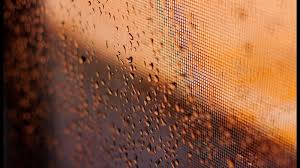
Breaking News
 IT'S OVER: Banks Tap Fed for $17 BILLION as Silver Shorts Implode
IT'S OVER: Banks Tap Fed for $17 BILLION as Silver Shorts Implode
SEMI-NEWS/SEMI-SATIRE: December 28, 2025 Edition
 China Will Close the Semiconductor Gap After EUV Lithography Breakthrough
China Will Close the Semiconductor Gap After EUV Lithography Breakthrough
 The Five Big Lies of Vaccinology
The Five Big Lies of Vaccinology
Top Tech News
 EngineAI T800: Born to Disrupt! #EngineAI #robotics #newtechnology #newproduct
EngineAI T800: Born to Disrupt! #EngineAI #robotics #newtechnology #newproduct
 This Silicon Anode Breakthrough Could Mark A Turning Point For EV Batteries [Update]
This Silicon Anode Breakthrough Could Mark A Turning Point For EV Batteries [Update]
 Travel gadget promises to dry and iron your clothes – totally hands-free
Travel gadget promises to dry and iron your clothes – totally hands-free
 Perfect Aircrete, Kitchen Ingredients.
Perfect Aircrete, Kitchen Ingredients.
 Futuristic pixel-raising display lets you feel what's onscreen
Futuristic pixel-raising display lets you feel what's onscreen
 Cutting-Edge Facility Generates Pure Water and Hydrogen Fuel from Seawater for Mere Pennies
Cutting-Edge Facility Generates Pure Water and Hydrogen Fuel from Seawater for Mere Pennies
 This tiny dev board is packed with features for ambitious makers
This tiny dev board is packed with features for ambitious makers
 Scientists Discover Gel to Regrow Tooth Enamel
Scientists Discover Gel to Regrow Tooth Enamel
 Vitamin C and Dandelion Root Killing Cancer Cells -- as Former CDC Director Calls for COVID-19...
Vitamin C and Dandelion Root Killing Cancer Cells -- as Former CDC Director Calls for COVID-19...
 Galactic Brain: US firm plans space-based data centers, power grid to challenge China
Galactic Brain: US firm plans space-based data centers, power grid to challenge China
3D Printing Membranes Could Change Water Treatment As We Know It

3D printing has come a long way in the past few years. Printers that once could only produce thick plastic can now churn out flexible material, metal, and now even semi-permeable membranes.
Researchers at the University of Bath assessed 3D printers' ability to work with membranes to evaluate the potential to 3D print membranes in the future, according to a study published online this week in the Journal of Membrane Science.
Membranes are useful in the water treatment industry for reverse osmosis treatment used in desalination and recycled water purification, among other uses. But creating one is particularly difficult, and they can usually only be built as a hollow tube or a flat membrane because of the setup of current manufacturing methods. 3D printing could change all of that.
"Although 3D printing technology is not quite well enough developed to yet produce large scale membranes that will be cost competitive with existing products, this work does signal what the future possibilities are with 3D printing," said Darrell Patterson, director of the Centre for Advanced Separations Engineering at the University of Bath, in a release.
Read more: Self-Assembling Nanoparticles Offer Super-Efficient, Portable Water Desalination
This is the first time the properties of various 3D printing techniques have been assessed and compared to the tools needed to create membranes, according to a University of Bath release.
Patterson said complex porous structures, membranes that could be adapted to odd-shaped surfaces and "membranes based on nature" would all be possible with 3D printing. At least, it could be one day.
Membranes could also be used to remove chemicals from the air prior to it leaving a manufacturing area and chemicals from wastewater prior to the water leaving a facility—and are a lower-energy, lower-cost option to current technologies, the study stated.



